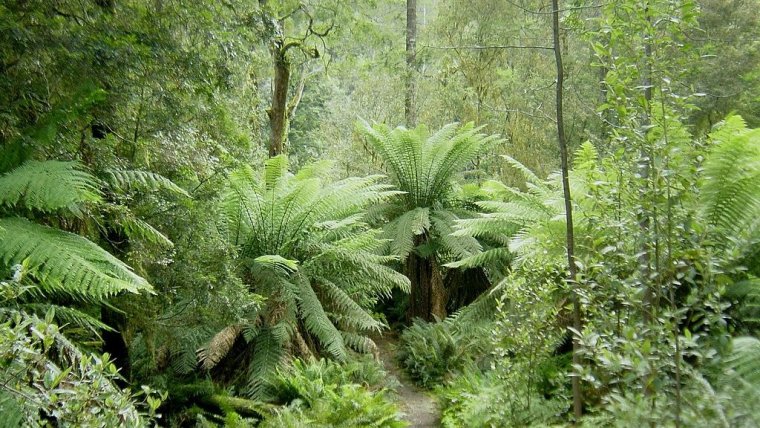| News / Science News |
NASA Satellite Images Uncover Underground Forest Fungi
NASA | APRIL 3, 2016
A NASA-led team of scientists has developed the first-ever method for detecting the presence of different types of underground forest fungi from space, information that may help researchers predict how climate change will alter forest habitats.

Temperate rainforest in Tasmania. ![]()
Hidden beneath every forest is a network of fungi living in mutually beneficial relationships with the trees. Called mycorrhizal fungi, these organisms spread underground for miles, scavenging for nutrients that they trade with trees for sugars the trees make during photosynthesis.
Because the two types of fungi are expected to respond differently to a changing climate, knowing where each type predominates may help scientists predict where forests will thrive in the future and where they will falter.
Every tree species has its own spectral signature -- it absorbs or reflects light in a specific pattern across all the wavelengths in the spectrum of light. Using satellite images of forest canopies, the team probed whether they could identify any patterns in the spectral signatures of tree species associated with one type of fungus that did not appear in species associated with the other type.
The team studied images of four U.S. forest research plots that are part of the Smithsonian Institution’s Forest Global Earth Observatory. In these forests, which include 130,000 trees across 77 species, the tree species associated with each type of fungus had already been mapped from the ground.
They found what they were looking for when they examined various milestones throughout the growing season, such as when the trees leafed out in spring and when they reached peak greenness. There were significant differences in the timing of these milestones between regions dominated by the two types of fungi.
Having identified the timing sequences related to each type of fungus, the researchers developed and tested a statistical model to predict the areas of fungus domination in any particular Landsat image from canopy changes alone.
YOU MAY ALSO LIKE


